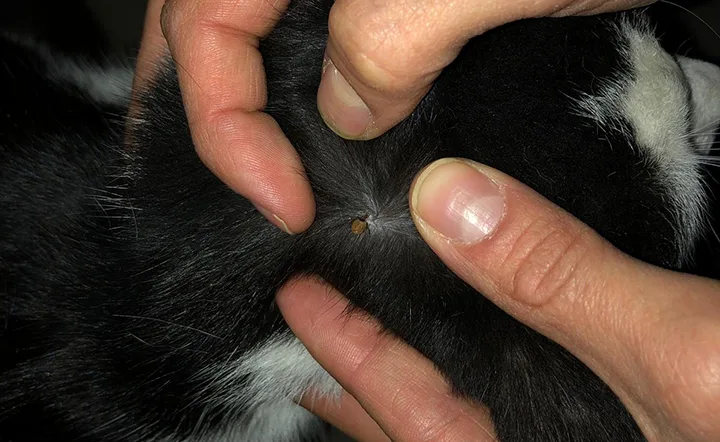Recommendations for Feline Ectoparasiticides
Donato Traversa, DVM, PhD, DipEVPC, EBVS, University of Teramo, Teramo, Italy
In the Literature
Lavan R, Armstrong R, Normile D, Vaala W. Adherence to veterinary recommendations for ectoparasiticides purchased by cat owners in the USA. Parasit Vectors. 2020;13:541.
The Research …
Flea and tick infestations can cause clinical disease and have the potential to transmit infectious and zoonotic pathogens.1,2 Abundant safe and effective flea and tick control options should be available at the clinic. Pet owner compliance with treatment recommendations is critical because reduced compliance can lead to treatment failure and persistent infestation.
This study* evaluated duration of coverage of 3 flea and tick treatment products purchased by cat owners in the United States: a 12-week administration product containing fluralaner, a monthly product containing fipronil/(S)-methoprene/pyriproxyfen, and a monthly product containing imidacloprid/pyriproxyfen. All were labeled for flea control; fluralaner and fipronil/(S)-methoprene/pyriproxyfen were also labeled for tick control. The study aimed to evaluate whether the 12-week treatment interval resulted in a different duration of coverage than monthly administration. Transactional records from a commercial database derived from practice management software were obtained and analyzed. The database included the purchasing records of cat owners over a 30-month period from 2017 to 2019 from 671 veterinary clinics; 41,630 cats were represented. Owners purchased a yearly average of 1.5 doses of fluralaner (providing 4.2 months of treatment coverage), 3.6 doses of fipronil/(S)-methoprene/pyriproxyfen, and 2.8 doses of imidacloprid/ pyriproxyfen. The authors concluded that the 12-week administration interval provided 17% or 50% longer annual protection than fipronil/(S)-methoprene/pyriproxyfen and imidacloprid/ pyriproxyfen, respectively.

Fleas and flea feces on a cat. Image courtesy of Simone Morelli, University of Teramo

Tick feeding on a cat. Image courtesy of Ilaria Russi, University of Teramo
… The Takeaways
Key pearls to put into practice:
Fleas and ticks are key ectoparasites in cats, and although vector-borne diseases are more common in dogs, cats are also affected. Some transmitted pathogens also pose a zoonotic risk to humans.
Educating cat owners on the importance of using flea and tick preventives is imperative, regardless of the recommended/prescribed product. Clinicians should also consider following recognized guidelines (eg, from the Companion Animal Parasite Council) in order to safeguard patient health and minimize risks for humans.
Many marketed ectoparasiticides have efficacy against both fleas and ticks. Recommendations should be made based on individual patient considerations, including geographic location. In addition, owner compliance should be considered, as it has an impact on the reliability of ectoparasite control programs.
*This study was funded by Merck Sharp & Dohme, a subsidiary of Merck Animal Health.